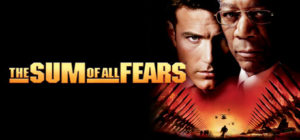
Opera Meets Film: A Tenor & Soprano Provide ‘The Sum of All Fears’ With Its Dramatic & Emotional Structure
By David SalazarOpera Meets Film” is a feature dedicated to exploring the way that opera has been employed in cinema. We will select a section or a film in its entirety, highlighting the impact that utilizing the operatic form or sections from an opera can alter our perception of a film that we are viewing. This week’s installment features “The Sum of All Fears.”
Phil Alden Robinson’s spy thriller opens with a soprano voice and ends with a tenor. But how these two different voices express different story points is what gives the film structural coherence.
The film itself shifts perspective constantly as war between the US and Russia seems imminent. We move from Jack Ryan to the Russians, to the President and his cabinet, to the schemers, and then on to other characters, all building a web of deceit and confusion. And so it is that the two vocal passages amplify this sense of shifting perspectives.
The soprano voice sings “The Mission” over a montage of a bomb being transported in the film’s prologue. It ends with the bomb falling back to earth and disappearing for a few years. The musical passage adds a sense of mystery and even longing as the destructive weapon slowly makes its way toward its destination. There is a sense of foreboding that will dominate the film in its entirety. The piece itself, a mystery to listeners, adds to the sense of intrigue.
It plays as a complete contrast to the tenor’s aria, “Nessun Dorma,” which materializes during the film’s epilogue. The piece is undeniably a touchstone not only of opera, but popular culture, and audiences listening to it play during the film won’t be all that surprised by its appearance. Moreover, it’s context is far from a mystery. If anything, it is meant to reflect exactly what is onscreen and give the audience the same sense of valediction that the aria expresses.
The aria itself initiates in the lair of the film’s main villain Dressler as he is portrayed as an opera lover a few scenes earlier. It plays on a cliché of villain characters being associated with classical music, but Robinson uses that trope and subverts it. Dressler thinks he has won and has caused Russia and the US to engage in nuclear war. So to celebrate his win, he puts on “Nessun Dorma.” But in that moment, John Clark, another spy, sneaks in and kills him. And from there on, the montage cuts between the death of all the other conspirators and the two presidents of the US and Russia making a declaration of peace. Cinefiles will undeniably see echoes of the climaxes in “The Godfather” and, more specifically “The Godfather Part III.”
But what is more important here is that this montage, which essentially ends the film, immediately calls attention to that earlier montage from the film’s opening. Suddenly that passage, both dramatically and musically, fits into the larger narrative and structure of the film. We have moved from mystery to knowledge, from war to piece. We have started with a mission and ended with the completion of that mission. And music has provided the emotional link to all of it.


